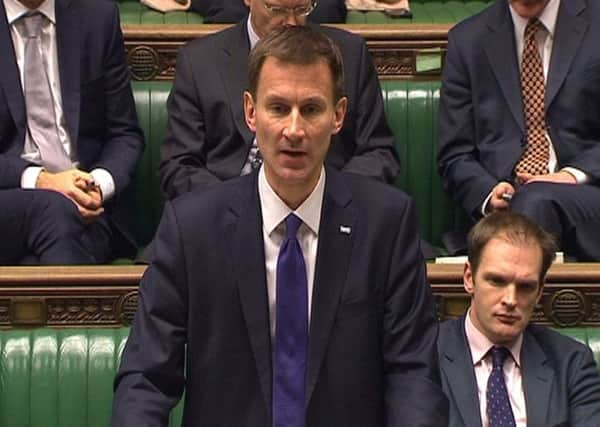Postcode lottery over dementia care exposed


Some of the best and worst performances in the country are to be found in different corners of the region, a report by the Department of Health reveals.
Sheffield leads the way with 68 per cent of people who have the condition given a diagnosis – the third best rate in England.
Advertisement
Hide AdAdvertisement
Hide AdBut diagnosis rates are almost half that in the East Riding, which languishes near the bottom of the national league table with just 38 per cent of patients diagnosed.
The overall rate of diagnosis across all the region’s clinical commissioning groups (CCGs) was 51.8 per cent, beating the 48 per cent national average.
Yorkshire’s figure was bolstered by Sheffield’s high rate along with those in Bradford Districts (65.3 per cent) and Bradford City (62.5 per cent).
Rotherham; Leeds South and East; Leeds West; Wakefield; and North Kirklees also all scored above the regional average, while diagnosis rates in Greater Huddersfield; Leeds North; Harrogate and Rural District; Airedale, Wharfedale and Craven; Calder-dale; and Barnsley were above the national average.
Advertisement
Hide AdAdvertisement
Hide AdBut those in the Vale of York; Hambleton, Richmondshire and Whitby; Hull; Scarborough and Ryedale were lower, along with the East Riding.
Judith Gregory, regional operations manager for the Alzheimer’s Society in Yorkshire, said: “It is fantastic to see Sheffield and Bradford leading the way as some of the best performing areas for dementia diagnosis rates.
“We must ensure that the successes and best practice that have been seen here are being shared and are used to help drive up standards around the country.
“However, we can’t afford to be complacent. Parts of the region still have much lower diagnosis rates so we need to see an end to the postcode lottery.”
Advertisement
Hide AdAdvertisement
Hide AdThe figures were revealed in the Department of Health’s State of the Nation report and interactive map exposing gaps in care across England, where diagnosis rates varied from 39 to 75 per cent.
Health Secretary Jeremy Hunt said allowing patients to see which parts of the country were guilty of “poor performance” would help tackle what he calls a health and care “time bomb”.
The World Health Organisation estimates that the number of people worldwide living with dementia could more than treble to 115 million by 2050 as the population ages.
The figure is expected to pass the million mark in the UK alone by the end of 2020.
Advertisement
Hide AdAdvertisement
Hide AdMr Hunt said: “Dementia is one of the biggest challenges we face as a nation. This report and map will help drive up standards of dementia care across the country by showing what excellent care looks like, and challenging the rest to become like the best.
“Full transparency is the best way to drive up standards and tackle poor performance.”
The report points to an almost doubling in Government-funded research, a fourfold increase in the number of patients seen by memory clinics, and training for 108,000 NHS staff in spotting early symptoms.
But shadow minister for care and older people Liz Kendall said: “If David Cameron was serious about improving the quality of dementia care, he would not have cut council budgets for older people’s social care to the bone.
Advertisement
Hide AdAdvertisement
Hide Ad“And if Jeremy Hunt was serious about improving transparency, he would be publishing how many 15-minute home visits there are in each area, and how many people with dementia have unnecessarily ended up in hospital or having to go into a care home because they can’t get the help they need to stay living in their own homes.
“Dementia is indeed one of the biggest challenges facing this country – but, under David Cameron’s watch, care for people with dementia is getting worse.”
Yorkshire Post Christmas Appeal: Page 10.